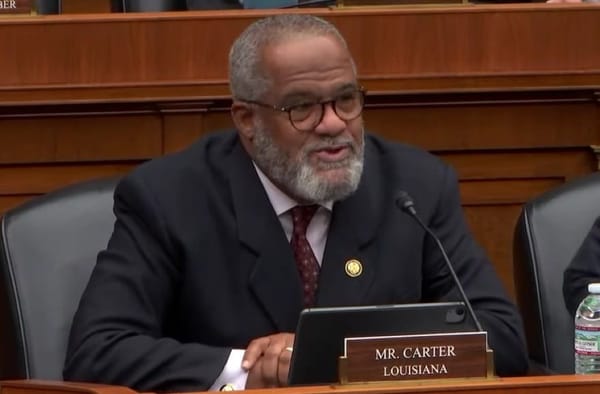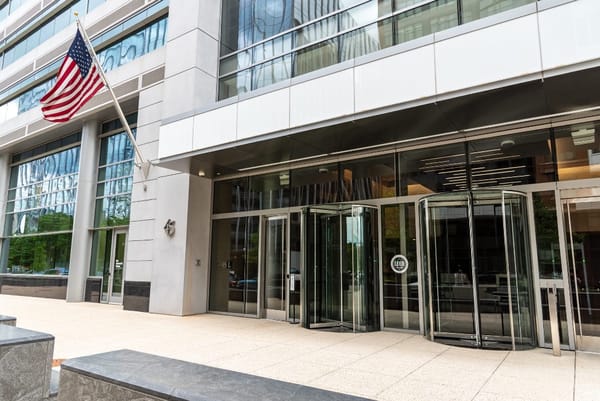Justin Reilly: Rising Ransomware Threats on Schools Require Better Approach to Cybersecurity
Ransomeware attacks are a costly lesson for educators.
Broadband Breakfast

Since the advent of the pandemic, education has been in a state of vulnerable flux. The rapid embrace of technology, sparked by the need to introduce remote learning, has given many educators whiplash. They need time to normalize, but recent trends threaten their ability to do so.
Against the backdrop of technological chaos, opportunistic hackers have been targeting schools with heightened fervor, causing harmful delays and disruptions on both a systemic and financial level. It’s time for schools to start getting proactive about cybersecurity, or they risk paying a hefty tuition to learn why they should have acted sooner.
Education technology use is surging across the nation. A recent study showed ed-tech up 52 percent over pre-pandemic levels, with U.S. school districts using nearly 1,500 different digital tools on average each month. While these digital tools possess the power to ultimately streamline and transform classroom management for the better, teachers are still feeling overwhelmed by the number of technology solutions they’re being asked to implement.
This issue is being exacerbated by many tech-resistant districts and teachers being forced to catch up all at once. When the pandemic hit, using devices and technology in the classroom was no longer an option – learning quickly needed to be online and accessible. By now, the dam has fully broken on tech adoption and we’re only likely to see these trends accelerate. Of course, as other sectors have seen firsthand over the last two years, these unchecked developments often cast unsavory shadows.
An appealing target for hackers
School districts were already an appealing target for hackers ahead of the pandemic, but the rapid adoption of technology – often outstripping security measures equal to these digital strides – has effectively chummed the waters for malicious elements looking for a “soft” target.
Cyberattacks against school districts went up by 18 percent in 2020, the height of the pandemic. The trend has continued since and isn’t expected to slow down in 2022. Among attacks against school districts, ransomware – an attack that locks users out of files on their own systems and then demands ransom money to return their rightful access – is by far the most common variety.
Just a few weeks into 2022, there were already multiple major headlines involving ransomware targeting school districts. The biggest story was the hacking of education website service provider FinalSite, which shut down the websites of 5,000 schools and colleges. Another story involved the cancellation of classes for 75,000 students after the Albuquerque Public Schools district fell victim to a ransomware attack it had been fending off for several weeks.
Yet another case, also in New Mexico, affected the town of Truth & Consequences. The town suffered a cyberattack just after Christmas and, as of mid-January, had still not regained control of its computer systems.
There’s no time left for district leaders to drag their feet on cybersecurity. It can be tough, especially given budget challenges, but the gap between digital advancement and lacking cybersecurity presents too great of a risk for schools.
Make cybersecurity a priority in hiring
So what can school districts do to prepare? The first step is to make cybersecurity a proper priority – and that includes budgeting and hiring. Many schools still don’t have dedicated cybersecurity officers, instead relying on – in many cases at best – a CIO who happens to be tech-savvy.
This is starting to turn around in light of recent events, with more and more schools hiring chief cybersecurity officers and point-persons. Keeping up with this trend will be critical for setting a strong foundation.
Budgeting will always be a challenge, of course, seeing as many school districts still don’t have any budget at all dedicated to cybersecurity. This needs to change, but some schools have started getting creative on this front in the meantime. One possibility is to fold cybersecurity efforts into operating budgets. Another timely approach is to capitalize on new and improved “cyber grants” being offered by federal and local governments to meet this increasing need.
The most important thing is simply not to be ad hoc about cybersecurity. School districts can proactively gather data to find out where their needs are, what the wants are from teachers, and how they can properly address them. It’s far better to start gathering this data early rather than wait until it’s too late.
Consider this: schools can either make the investment now or pay much more a short way down the road. Should a school or district become the victim of ransomware, they’ll have to pay both to resolve the immediate crisis and for cybersecurity upgrades, all of which will have been unbudgeted and leave them reeling long after the attack. The norms of education are changing, and priorities need to change with them.
Justin Reilly is the CEO of Impero Software, which offers a virtual private network solution for schools and also serves more than half of the Fortune 100. This Expert Opinion is exclusive to Broadband Breakfast.
Broadband Breakfast accepts commentary from informed observers of the broadband scene. Please send pieces to commentary@breakfast.media. The views reflected in Expert Opinion pieces do not necessarily reflect the views of Broadband Breakfast and Breakfast Media LLC.










Member discussion